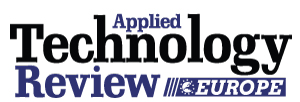THANK YOU FOR SUBSCRIBING

Integrating Risk Management and Contamination Control Strategies
Patrick Nieuwenhuizen, Director, Senior Consultant, Pharmalex

 Patrick Nieuwenhuizen, Director, Senior Consultant, Pharmalex
Patrick Nieuwenhuizen, Director, Senior Consultant, PharmalexThrough this article, Patrick Nieuwenhuizen examines how Quality Risk Management (QRM) and Contamination Control Strategies (CCS) are increasingly intertwined across the EU and US regulatory landscapes. He highlights the evolution of guidance from ICH, FDA, and USP, explaining why a holistic, risk-based approach to CCS is essential for safeguarding product quality and patient safety.
Contamination Control and Quality Risk Management
All pharmaceutical products must be safeguarded against contamination to ensure quality and safety, whether they are non—sterile oral medications for common conditions or parenteral drugs for rare diseases.
What differs is how contamination is controlled and the level of effort required. These depend primarily on the type of product, its route of administration, and the patients it is intended to treat.
Making Sense of Complex Manufacturing Rules
Current Good Manufacturing Practice (cGMP) requirements can be complex, and interpreting minimum standards for a specific product is often challenging. Contamination prevention is addressed in the EU’s EudraLex Volume 4 Good Manufacturing Practice guidelines and the US Code of Federal Regulations (CFR) Parts 210 and 211.
EU and US regulators expect pharmaceutical companies to apply QRM principles to ensure product quality. The concept is not new. In 2002, the US Food and Drug Administration (FDA) introduced its Pharmaceutical cGMPs for the 21st Century initiative, advocating a risk-based quality framework emphasising contamination prevention. This thinking led to the concept of Quality by Design (QbD).
Between 2009 and 2012, the International Council for Harmonisation (ICH) introduced guidance through ICH Q8 on pharmaceutical development, Q9 on quality risk management, and Q10 on pharmaceutical quality systems. These documents collectively describe integrating quality and contamination prevention throughout the pharmaceutical lifecycle.
“Contamination control strategies are not just compliance tools. When integrated with quality risk management, they form a proactive framework that protects patients, strengthens pharmaceutical quality systems, and adds value to products and processes”
Since then, QRM has been embedded into both EU and US regulatory guidance. To support compliance, the FDA published Guidance for Industry—Sterile Products Produced by Aseptic Processing in 2004, outlining controls expected for contamination prevention. More recently, the FDA’s 2021 draft guidance, Microbiological Quality Considerations in Non-Sterile Drug Manufacturing, emphasised that risk assessments must be integral to contamination control in non-sterile manufacturing.
Removing Ambiguity with Annex 1
In 2022, the European Commission released its long-awaited update of Annex 1, Manufacture of Sterile Medicinal Products. For the first time, a regulatory document clearly stated that QRM principles apply throughout and that manufacturers must implement a CCS with effectiveness monitoring.
Annex 1 also requires CCS to be integrated into the company’s pharmaceutical quality system (PQS). While section 211.113 of CFR Part 211 similarly calls for control of microbiological contamination in sterile and non-sterile drug products, it is not as explicit. Annex 1 goes further by outlining minimum elements to consider in a CCS, identifying risks, and specifying the controls expected—each of which should be assessed using QRM principles. Any resulting actions must link back to the PQS.
The United States Pharmacopeia (USP) has also advanced CCS guidance. In March 2025, USP published two new draft chapters for consultation: <1110> Microbiological Contamination Control Strategy Considerations and <1114> Microbial Control Strategies for Cell Therapy Products. Both emphasise QRM, with <1114> directly referencing risk management and mitigation as part of the PQS.
A Holistic Approach to CCS
EU and US regulators now expect companies to maintain a risk-based CCS covering utilities, manufacturing systems and environments, raw materials, intermediates, and finished products.
At its core, CCS is about patient safety. It requires systematically assessing where contamination can occur, identifying controls to prevent it, and ensuring mechanisms exist to detect it.
CCS adds value to product quality and patient safety when implemented as a proactive, risk-based tool. It should be treated as a continuous process, not a compliance exercise.
Conclusion
QRM and CCS are no longer parallel concepts—they are interdependent. Regulatory expectations on both sides of the Atlantic make it clear: companies must design, implement, and monitor contamination control strategies as part of their pharmaceutical quality systems.
By embracing this holistic, risk-based approach, manufacturers move beyond satisfying regulators. They strengthen product integrity, protect patients, and demonstrate a commitment to quality that endures.
Read Also





















ON THE DECK